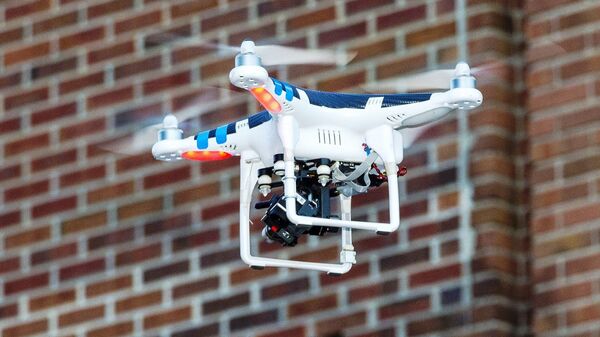Chitra Karanam, a PHD student, and Professor Yasamin Mostofi from the Department of Electrical and Computer Engineering at the university presented their results at the Association for Computing Machinery/Institute of Electrical and Electronics Engineers International Conference on Information Processing in Sensor Networks.
"Our proposed approach has enabled unmanned aerial vehicles to image details through walls in 3D with only Wi-Fi signals. This approach utilizes only Wi-Fi Received signal strength indicator (RSSI) measurements, does not require any prior measurements in the area of interest and does not need objects to move to be imaged," Mostofi said in a recent interview.
According to the researchers, the process of how it works is quite simple. The drone beams radio waves and another drone which will be on the other side of the wall will measure the power of the signals.
According to Professor Mostofi, the strength of the received signal drops by a certain level depending on the presence of objects through the wall.
The process uses a technology called voxels, which describe a path of three-dimensional space.
Both drones have to be parallel with one another and they must travel in a zigzag motion. They can hover outside a 10cm (4 inch) brick wall and get a good picture inside.
Experts believe this software could be used in war zones and conflict areas, as well as after a disaster to assess the damage caused when it would be dangerous to use a human.
Here is a link to UCSB press release today on our work on robots seeing through concrete walls with only WiFi: http://t.co/qd3C8Clyic
— Yasamin Mostofi (@RoboticNetwork) August 6, 2014
The research still has some way to go, as it is currently not possible for the drones to capture every image.
Each voxel looks at its neighbors' image decisions. For instance, if a voxel's own decision is that this voxel should be empty but then the neighbors' decisions are all full [non-empty], then the voxel may want to revise its decision since there should be a spatial correlation," Professor Mostofi said in a recent interview.
"So the belief propagation method is a way of doing this iterative update. At some point, the image will converge to something and will not change any more. That is the final imaging result we produce, and its quality has improved a lot beyond that initial processing phase," she added.



